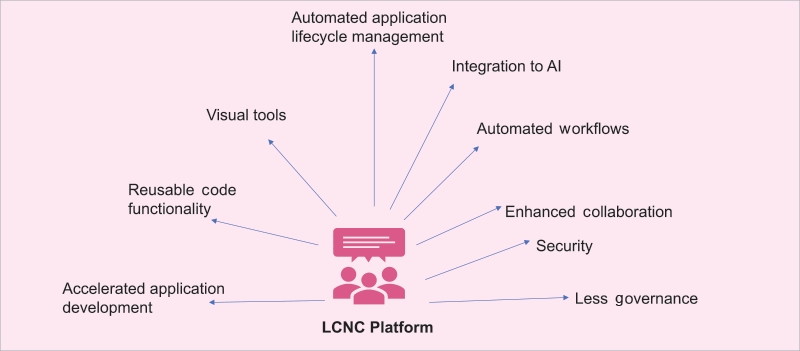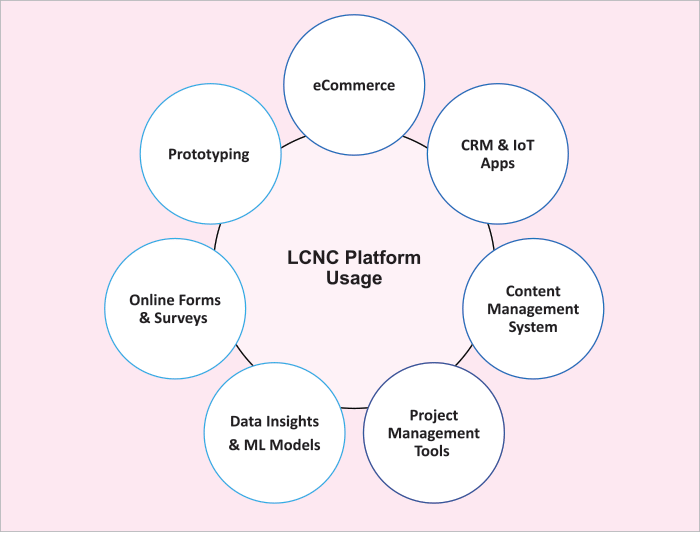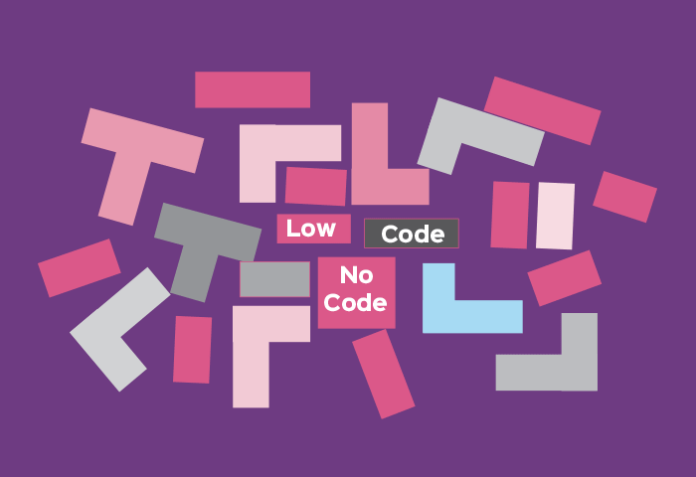Software development has received a boost with the emergence of low-code/no-code (LCNC) platforms that allow even those not initiated in coding to create applications in quick time. We take a look at some of the best LCNC platforms in the open source domain.
With skilled software developers in short supply, enterprises are turning to artificial intelligence (AI) and low-code/no-code (LCNC) platforms to get their work done quickly while reducing development costs. Low-code software development uses a platform that requires minimal coding to create software. Low-code platforms are suitable for rapid application development and automating business processes. No-code software development provides an interface with drag-and-drop functionality to develop applications from various templates and components of pre-programmed software. This helps to create an application without coding. No-code platforms are suitable for small businesses and offer quick solutions.
Gartner predicts that by 2026, developers outside formal IT departments will account for at least 80% of the user base for low-code development tools, up from 60% in 2021. According to IDC, sales of no-code platforms will grow at an annual rate of 13.9% through 2026, with that of low-code platforms growing at 14.1% over the same period.
A market research study published by P&S Intelligence states that the global low-code market will witness a 31.1% CAGR between 2020 and 2030 to reach US$ 187 billion by 2030.
Key characteristics of LCNC platforms
LCNC platforms enable developers to quickly build applications by leveraging a library of pre-built components, such as user interfaces, databases, and APIs. Check Figure 1 for the key characteristics of these platforms.
Some of the most common characteristics are:
- Accelerated application development and a drag-and-drop interface, which allows creation of applications by using flow charts and other diagrams. These platforms democratise development as there is no need of experience and training to build effective custom apps.
- Reusable code functionality, which saves time as users don’t need to re-create core components.
- Visual tools for personalised and seamless user experiences.
- Automated application lifecycle management, covering rapid application development, debugging, staging, and deployment.
- Integration with AI helps streamline processes and automate decision-making.
- Automated workflows and decision-making processes help in optimising productivity and reducing manual efforts.
- Authentication processes and data encryption services enhance security.
- LCNC development simplifies the cognitive load and timing pressures on developers, potentially reducing the need for governance.
Key LCNC platforms
The LCNC market is populated by several key players in the proprietary and open source domains.
Proprietary platforms
Major proprietary platform vendors for LCNC are SAP, Appian, Google Appsheet, Mendix, Pegasystems, Outsystems, Zoho Creator, Microsoft PowerApps, HCL Volt MX, Salesforce, ServiceNow, etc. Some of these proprietary platforms are briefly explained below.
Salesforce: Salesforce includes all the tools for creating business apps. Users can publish apps to app stores using the platform’s Mobile Publisher.
Microsoft Power Apps: This platform helps to create rich web and mobile apps. It is built on Microsoft’s Common Data Service.
Appian: This low-code platform focuses on automating complex workflows. It helps users build BPM (business process management) apps — for example, robotic process automation, case management, and document management. The platform also provides pre-built connectors to merge with other apps.
Service Now: With its great app structure, this platform allows anyone to automate, extend, and build digital workflows. It eases app creation for different business operations.
HCL Volt MX: Volt MX is a full-stack application development and runtime platform. It implements classic model-view-controller architecture with a clear separation of presentation, logic, and data, allowing architectural interoperability with traditional software engineering approaches.
OutSystems: This platform focuses on creating web and mobile apps that are high-performance and scalable. It is used for modernising legacy applications.
Mendix: Mendix supports enterprise app development, cross-platform mobile development, legacy application modernisation, and process automation. It helps in securely integrating data and logic from external sources and legacy systems.
Open source LCNC platforms
Open source LCNC platforms offer a range of capabilities ranging from web development and process automation to machine learning, making them valuable for developers and non-developers. They are cost efficient, flexible, scalable, reliable, transparent and, importantly, have no vendor lock-in.

The top ten open source LCNC development platforms are listed below.
Budibase: This versatile low-code platform offers a drag-and-drop interface, pre-built components, and support for multiple external data sources, including MongoDB, PostgreSQL, MySQL, Elasticsearch, Airtable, and more.
Huginn: Designed for process automation, it allows users to create agents that monitor automation of tasks and workflows without extensive coding. Huginn’s agents create and consume events visualised via a directed graph.
WordPress: Widely used for building websites with a drag-and-drop interface, WordPress is highly customisable with numerous plugins and themes, making it a versatile no-code platform for web development.
Node-RED: This platform provides a visual programming interface to wire together devices, APIs, and online services, making it easy to create complex workflows. It offers a good solution for building IoT applications, and has nodes dedicated to Raspberry Pi and BeagleBone boards.
PyCaret: This low-code machine learning library in Python simplifies the process of building and deploying machine learning models, making it accessible for users with minimal coding experience
Baserow: This platform offers a drag-and-drop interface and data visualisation tools used for data-driven projects. It allows data collaboration, supports rich field types, APIs, webhooks and relations between tables.
Appsmith: Used for building internal tools, it provides a drag-and-drop interface and integrates with various data sources to create custom applications.
Directus: This CMS and data platform allows managing content and data with a no-code interface. It is highly customisable, integrates well with other tools and allows building workflow automations. It connects to PostgreSQL, MySQL, SQLite, OracleDB, CockroachDB, MariaDB, and MS SQL databases.
Supabase: This platform provides a backend as a service, including a real-time database, user authentication, row level security, REST API, edge functions and storage. All the data is accessible through a no-code interface.
Metabase: This business intelligence tool allows creation of dashboards and visualisations without writing code. It is user-friendly and integrates with various data sources.
Any application can be built based on the flexibility and extensibility of an LCNC platform. Some of these platforms are suitable for specific use cases such as, enterprise applications, e-commerce systems, IoT solutions or game development.
Challenges faced in the adoption of LCNC platforms
Vendor lock-in: Vendor lock-in is a challenge as many LCNC platforms do not allow moving the code or product from one platform to another.
Security: Safety of enterprise data is a major concern and is dependent on the platform being used.
Lack of customisation: Some LCNC platforms limit customisation possibilities.
Rigid templates and components: LCNC platforms provide readily available templates and components. Users need to modify these to meet a set of use cases while building an app.
Limited integration options: LCNC platforms focus on operational efficiency and do not allow custom integrations for third-party or internal enterprise systems.
No support for complex apps: Current LCNC platforms do not support complex functionality and unstructured workflows.

The benefits of using LCNC platforms
Improved customer experience: LCNC platforms provide a better and easy user interface for end users. This helps businesses retain customers by meeting the latter’s requests and expectations.
Faster delivery: These platforms leverage natural language processing, which allows users to generate code without extensive software development expertise. The platforms help to reduce the coding and remove complex issues from the development process. This enables users to design and deliver applications at a much faster rate.
Easy to use: Business users can create and configure workflows more efficiently. Help is available while writing scripts or queries, reducing the dependency on technical teams.
Reduced costs: A lot of money and resources can be saved by using LCNC platforms, as the coding is minimal. LCNC platform usage needs the least training, and anyone can create an application.
Increased efficiency: These platforms help users enhance their productivity, speeding up the design and delivery of apps.
LCNC platforms are ideal for businesses undergoing digital transformation, as they can help them do more at a lower cost. Some of these LCNC tools support versioning and collaboration between teams to ease the development work.
Open source LCNC development platforms empower individuals and enterprises to create applications efficiently and cost-effectively. As different platforms offer different sets of features, the platform you select must align with the enterprise’s project requirements, whether it’s database management, content creation, or automation. In the future these platforms will make greater use of artificial intelligence to improve app development processes.












































































